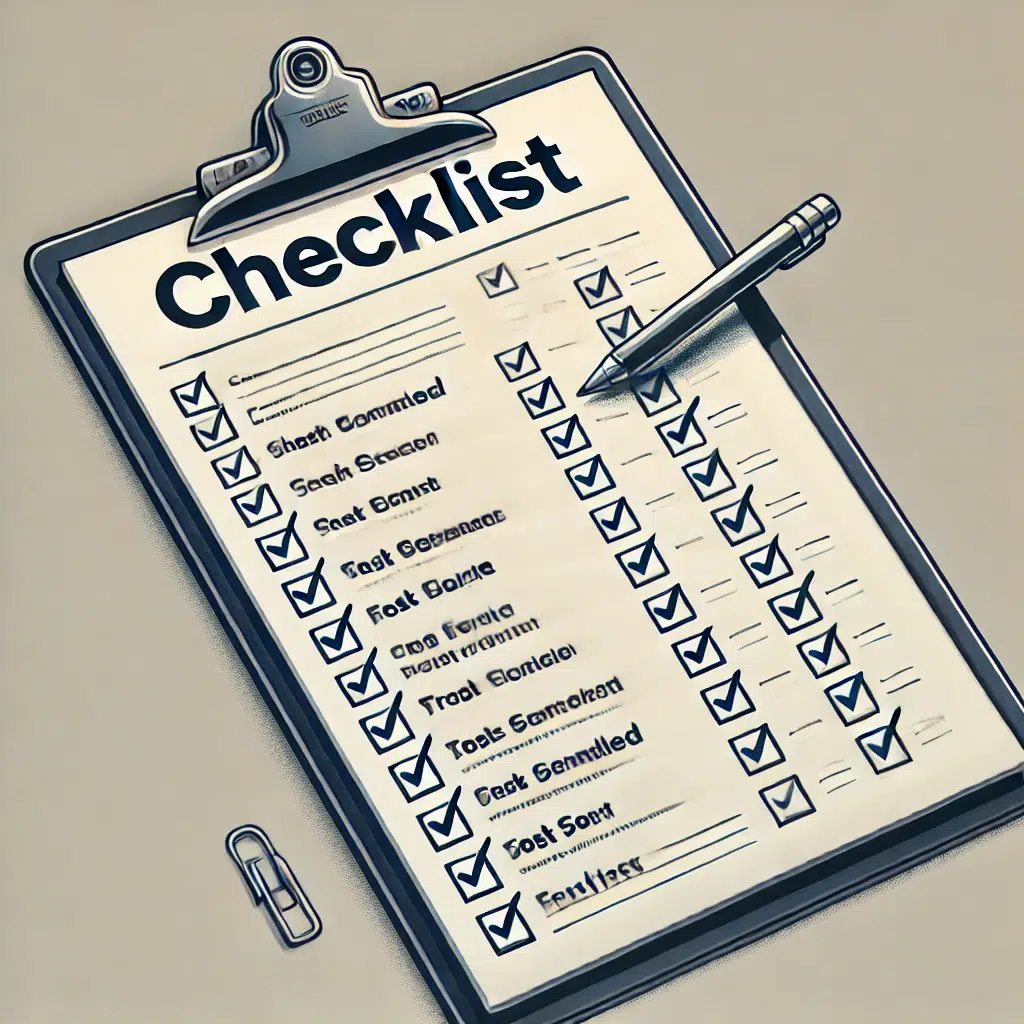The task of transferring supplier responsibilities is a nuanced and pivotal process within procurement, especially for the Operative Buyer role. It’s a phase that requires precision, clarity, and strategic foresight to ensure the continuity of a robust supply chain. Our detailed Supplier Responsibility Transfer Checklist is a meticulously crafted tool that guides procurement professionals through the transition journey, ensuring that nothing falls through the cracks.
Content….
From conducting a thorough inventory assessment to reviewing supplier contracts and performance data, each step is designed to arm the incoming buyer with a comprehensive understanding of their new role. The checklist also emphasizes the importance of fostering strong relationships, both with the team and the suppliers, and underscores the significance of risk management and operational know-how.
With a clear transition plan and a commitment to post-transfer follow-up, operative buyers are positioned to tackle the challenges ahead with confidence. This checklist not only streamlines the handover process but also minimizes operational disruptions, safeguarding the integrity of supplier relationships.
Remember, successful supplier management is the result of thorough preparation, effective communication, and strategic planning. Equip yourself with the right tools and knowledge, and the transfer of supplier responsibilities will become a seamless chapter in your procurement story.
To ensure a smooth transition, we’ve compiled a comprehensive Supplier Responsibility Transfer Checklist to guide procurement professionals through the process.
Supplier Responsibility Transfer Checklist
1. Inventory Assessment
- Start with a thorough inventory assessment. Understand current part#, stock levels, back order levels, and stock in transit. Consider supplier lead times to gauge future inventory needs. An accurate inventory assessment is critical for the incoming buyer to maintain optimal stock levels.
2. Supplier Contracts
- Review all relevant contracts with the supplier. This includes understanding the terms and conditions, identifying upcoming renewals, and being aware of warranties and service agreements. A firm grasp of contractual obligations helps to manage supplier relationships effectively.
3. Supplier Performance Data
- Share relevant data regarding supplier performance. This should cover delivery times, quality metrics, and responsiveness. Past audit results provide valuable insight into supplier reliability, forming a solid basis for future decisions.
4. Purchasing Data
- Hand over all purchasing data, including spend analysis and the current purchase order process. Detail any critical vendors and unique buying requirements. This provides a snapshot of the current procurement situation and informs strategic decisions.
5. Relationship Management
- Facilitate an introduction meeting with key supplier contacts. Review past communication and highlight current issues or pending decisions. Outline expectations and protocols for future communication to ensure continuity in the relationship.
6. Supplier’s Financial Stability
- If possible, provide an overview of the supplier’s financial stability. Information about payment terms is also vital. This assists in evaluating the long-term viability of the supplier relationship.
7. Operational Understanding
- Discuss current projects involving the supplier. Offer an overview of the supplier’s products or services, and explain their role in the company’s operations or supply chain. This facilitates a deeper understanding of how the supplier contributes to overall business goals.
8. Risk Management
- Highlight any risks associated with the supplier and present any existing mitigation plans. Risk awareness and management are key aspects of effective procurement.
9. Technology and Systems
- Ensure the incoming buyer is comfortable with any software or systems used for managing the supplier. Offer training if necessary. Mastery of relevant technology enhances efficiency and accuracy.
10. Transition Plan
- Develop a clear timetable for the transition, outlining roles and responsibilities during this period. Define key milestones in the transition process to track progress and ensure a smooth handover.
11. Post-Transfer Follow-Up
- Plan for the first few weeks post-transition. Schedule follow-up meetings to discuss any challenges or questions. This allows for prompt troubleshooting and ongoing guidance.
In conclusion, the transfer of supplier responsibilities doesn’t have to be daunting. With this Supplier Responsibility Transfer Checklist, operative buyers can ensure a seamless transition, minimizing disruptions to operations and supplier relationships. Remember, the key to a successful handover lies in thorough preparation, clear communication, and effective planning.
Learn more about the Operative buyer role in the program: Basics for an Operative Buyer. In the program EFFSO introduces the Purchasing function and recent years’ changes in purchasing. The course is based on Arjan van Weele’s definition of operational and tactical purchasing and also include a 1 on 1 meeting with a mentor.
Copy and paste a summary of the Supplier Responsibility Transfer Checklist
Inventory Assessment:
- Current parts and stock levels
- Back order levels
- Stock in transit
- Supplier lead times
Supplier Contracts:
- Current contracts (expiry dates, terms & conditions)
- Upcoming contract renewals
- Warranties, service agreements and any legal considerations
Supplier Performance Data:
- Delivery times
- Quality metrics
- Supplier responsiveness and service metrics
- Results of the most recent supplier audit
Purchasing Data:
- Spend analysis (monthly, quarterly, annual)
- Purchase order process (POs in progress, frequency, volume)
- Critical vendors and unique buying requirements
Relationship Management:
- Introduction meeting with key supplier contacts
- Review of past communication/correspondence
- Current issues or pending decisions
- Expectations and protocols for future communication
Supplier’s Financial Stability:
- Latest financial information (if available)
- Payment terms
Operational Understanding:
- Current projects involving the supplier
- Review of the supplier’s products or services
- Overview of how the supplier fits into the company’s operations or supply chain
Risk Management:
- Any identified risks associated with the supplier
- Mitigation plans for these risks
Technology and Systems:
- Overview of any specific software used for managing the supplier
- Training on these systems if necessary
Transition Plan:
- A clear timetable for transition
- Roles and responsibilities during transition
- Key milestones in the transition process (including information supplier)

Post-Transfer Follow-Up:
- A plan for the first few weeks post-transition
- Scheduled follow-up meetings to discuss any challenges or questions
Remember to document this information comprehensively in the Supplier Responsibility Transfer Checklist and clearly to ensure the new buyer is adequately equipped to manage the supplier relationship.
About Learn How to Source
Learn How to Source (LHTS) is an online platform based in Sweden, offering a range of procurement courses accessible globally. It serves as a community where procurement experts share their knowledge through online courses, designed for various experience levels from introductory to expert. Courses are concise, about 30 minutes each, and cover different aspects of procurement, tailored for different buyer roles. The courses focus on practical knowledge, presented by seasoned professionals, and includes quizzes and certificates. They can be accessed from any device, emphasizing micro learning for flexibility and efficiency.
Note: Illustration of “Supplier Responsibility Transfer Checklist” is created by CHAT-GPT on Feb 26, 2024.
Utbildning Inköp will provide you with information about LHTS’ courses in Swedish.
